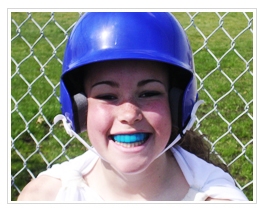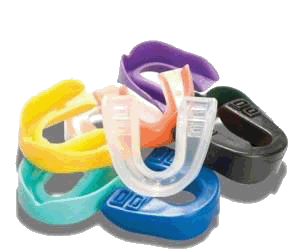Age Seven - The Magic Number For An Orthodontic Check-up
May 6th, 2019
 Many parents assume they must wait until their child has all of his or her permanent teeth to see an orthodontist, only to discover that treatment would have been much easier if started earlier. Did you know that the American Association of Orthodontists recommends that every child have an orthodontic check-up no later than age seven?
Many parents assume they must wait until their child has all of his or her permanent teeth to see an orthodontist, only to discover that treatment would have been much easier if started earlier. Did you know that the American Association of Orthodontists recommends that every child have an orthodontic check-up no later than age seven?
That's right - age seven.
Okay, so what's so important about age seven, you ask? By this age, most children have a mix of baby teeth and adult teeth making it an ideal time for evaluation. With early screening, Dr. Godwin can spot subtle problems with emerging teeth and jaw growth. The first molars have typically come in, providing an opportunity to check for malocclusion, or "bad bite." Also, the incisors have begun to come in, and problems such as crowding, deep bites, and open bites can be detected.
While many young patients may not be ready to start treatment, early evaluation allows Dr. Godwin to choose the optimal time to begin treatment. For some children, early evaluation may signal a need for early interceptive treatment. Early identification of problems often leads to easier or shorter orthodontic treatment in the future. Studies also show that early treatment can prevent physical and emotional trauma. Aside from spurring on  years of harmful teasing, misaligned teeth are also prone to injury and are detrimental to good oral hygiene.
years of harmful teasing, misaligned teeth are also prone to injury and are detrimental to good oral hygiene.
Good dental health starts early. To learn more about the benefits of early treatment, visit our website or download this brochure, courtesy of the American Association of Orthodontists.
If your child is nearing his or her seventh birthday or you have concerns about your child's dental development, give Bel Air Orthodontics a call to schedule your complimentary initial consultation.




